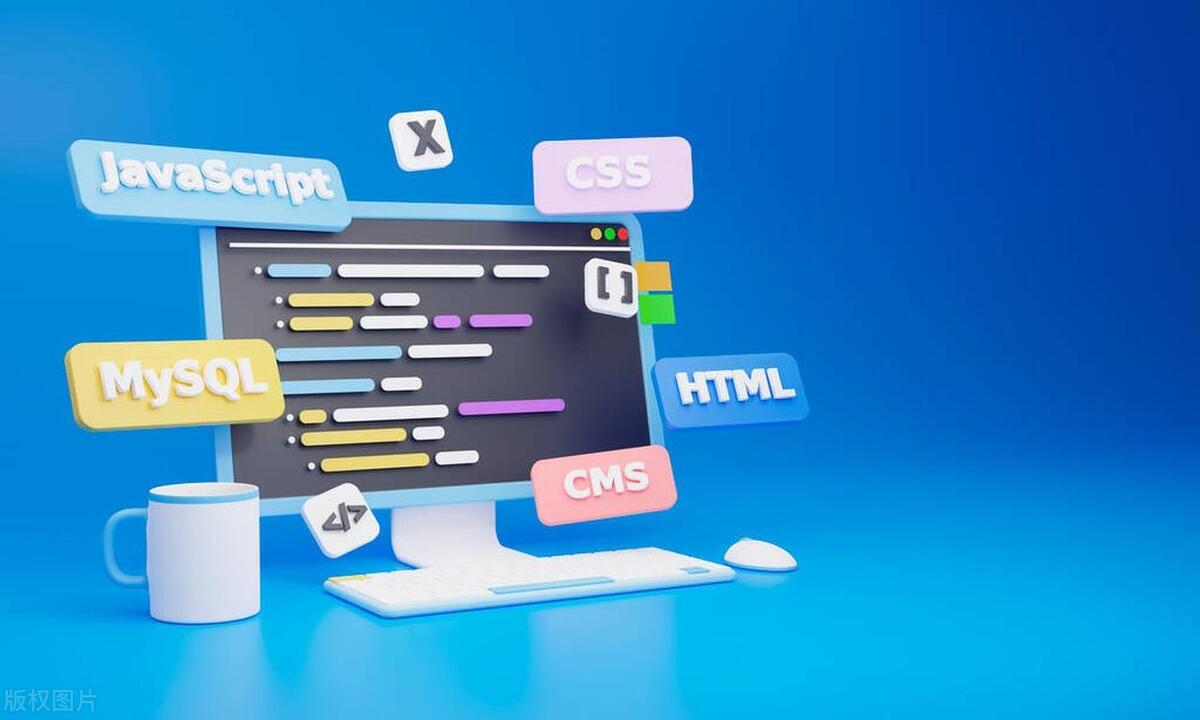Enabling Brotli compression can effectively improve front-end performance, especially for text resources. 1. Enable the Brotli module on the server such as Nginx and configure the compression level and MIME type; 2. Priority is given to static resources such as JS and CSS files, and the .br files can be pre-generated using tools during construction; 3. Use the fallback mechanism to cooperate with browser compatibility to ensure that unsupported clients can use Gzip; 4. Avoid duplicate compression during the construction process, set the compression level reasonably, and combine HTTP/2 to further optimize the transmission efficiency.

After using Brotli compression, the front-end performance can indeed be improved a lot. Especially for text-based resources (such as HTML, CSS, and JS), the compression rate is much higher than Gzip, loads faster, and has a better user experience.

Let’s talk about how to use Brotli well to improve front-end performance from several practical perspectives.
How to enable Brotli compression
Most mainstream servers support Brotli, but may not be turned on by default. Taking Nginx as an example, you need to first confirm that the ngx_brotli module is installed, and then add:

-
brotli on; -
brotli_comp_level 6;(Compression level, 1~11, default 6) -
brotli_types text/plain text/css application/json ...(Specify the MIME type to compress)
Express for Apache and Node.js can also be enabled through modules or middleware. In short, the key is to have the server bring Content-Encoding: br in the response header.
When should I use Brotli instead of Gzip
Brotli's advantages are mainly reflected in static resources, such as JS and CSS files, which are usually about 20% smaller than Gzip. Dynamic content can also be compressed, but because real-time compression is required, the CPU cost will be higher.

If you are doing a project with a lot of static site, SSG or CDN cache, it is recommended to use Brotli to press the resources in advance and then upload them to the server. For example, use brotli-webpack-plugin to generate .br files during construction, so that the compressed version is directly returned to the more efficient one when accessing.
Browser compatibility and fallback mechanism
Modern browsers basically support Brotli, including Chrome, Edge, Firefox, and Safari (macOS 10.13). Only a very small number of old clients do not recognize them. At this time, the server needs to determine whether to return Brotli content based on Accept-Encoding in the request header.
If not supported, it will automatically fall back to Gzip or original file. Therefore, it is best to retain the Gzip fallback solution at the same time when deploying to ensure that there is no problem with compatibility.
How to optimize and cooperate with Brotli in the construction process
In addition to server-side settings, the build tool can also cooperate with optimization. For example, Webpack can add a plug-in to compress the output file into .br format in advance, saving the overhead of compression during server runtime.
Also note:
- Do not repeatedly compress compressed files (such as pictures, fonts)
- Setting the appropriate compression level: Too high affects the build speed, too low wastes space
- The effect is better with HTTP/2, because the head compression Brotli text compression, the overall transmission volume decreases significantly
Basically that's it. Brotli is not complicated, but it is a very practical optimization point in modern front-end deployments, especially suitable for projects that value loading speed and SEO.
The above is the detailed content of Frontend Performance Tuning with Brotli Compression. For more information, please follow other related articles on the PHP Chinese website!

Hot AI Tools

Undress AI Tool
Undress images for free

Undresser.AI Undress
AI-powered app for creating realistic nude photos

AI Clothes Remover
Online AI tool for removing clothes from photos.

Clothoff.io
AI clothes remover

Video Face Swap
Swap faces in any video effortlessly with our completely free AI face swap tool!

Hot Article

Hot Tools

Notepad++7.3.1
Easy-to-use and free code editor

SublimeText3 Chinese version
Chinese version, very easy to use

Zend Studio 13.0.1
Powerful PHP integrated development environment

Dreamweaver CS6
Visual web development tools

SublimeText3 Mac version
God-level code editing software (SublimeText3)
 How does React handle focus management and accessibility?
Jul 08, 2025 am 02:34 AM
How does React handle focus management and accessibility?
Jul 08, 2025 am 02:34 AM
React itself does not directly manage focus or accessibility, but provides tools to effectively deal with these issues. 1. Use Refs to programmatically manage focus, such as setting element focus through useRef; 2. Use ARIA attributes to improve accessibility, such as defining the structure and state of tab components; 3. Pay attention to keyboard navigation to ensure that the focus logic in components such as modal boxes is clear; 4. Try to use native HTML elements to reduce the workload and error risk of custom implementation; 5. React assists accessibility by controlling the DOM and adding ARIA attributes, but the correct use still depends on developers.
 Describe the difference between shallow and full rendering in React testing.
Jul 06, 2025 am 02:32 AM
Describe the difference between shallow and full rendering in React testing.
Jul 06, 2025 am 02:32 AM
Shallowrenderingtestsacomponentinisolation,withoutchildren,whilefullrenderingincludesallchildcomponents.Shallowrenderingisgoodfortestingacomponent’sownlogicandmarkup,offeringfasterexecutionandisolationfromchildbehavior,butlacksfulllifecycleandDOMinte
 What is the significance of the StrictMode component in React?
Jul 06, 2025 am 02:33 AM
What is the significance of the StrictMode component in React?
Jul 06, 2025 am 02:33 AM
StrictMode does not render any visual content in React, but it is very useful during development. Its main function is to help developers identify potential problems, especially those that may cause bugs or unexpected behavior in complex applications. Specifically, it flags unsafe lifecycle methods, recognizes side effects in render functions, and warns about the use of old string refAPI. In addition, it can expose these side effects by intentionally repeating calls to certain functions, thereby prompting developers to move related operations to appropriate locations, such as the useEffect hook. At the same time, it encourages the use of newer ref methods such as useRef or callback ref instead of string ref. To use Stri effectively
 Vue with TypeScript Integration Guide
Jul 05, 2025 am 02:29 AM
Vue with TypeScript Integration Guide
Jul 05, 2025 am 02:29 AM
Create TypeScript-enabled projects using VueCLI or Vite, which can be quickly initialized through interactive selection features or using templates. Use tags in components to implement type inference with defineComponent, and it is recommended to explicitly declare props and emits types, and use interface or type to define complex structures. It is recommended to explicitly label types when using ref and reactive in setup functions to improve code maintainability and collaboration efficiency.
 Server-Side Rendering with Next.js Explained
Jul 23, 2025 am 01:39 AM
Server-Side Rendering with Next.js Explained
Jul 23, 2025 am 01:39 AM
Server-siderendering(SSR)inNext.jsgeneratesHTMLontheserverforeachrequest,improvingperformanceandSEO.1.SSRisidealfordynamiccontentthatchangesfrequently,suchasuserdashboards.2.ItusesgetServerSidePropstofetchdataperrequestandpassittothecomponent.3.UseSS
 A Deep Dive into WebAssembly (WASM) for Front-End Developers
Jul 27, 2025 am 12:32 AM
A Deep Dive into WebAssembly (WASM) for Front-End Developers
Jul 27, 2025 am 12:32 AM
WebAssembly(WASM)isagame-changerforfront-enddevelopersseekinghigh-performancewebapplications.1.WASMisabinaryinstructionformatthatrunsatnear-nativespeed,enablinglanguageslikeRust,C ,andGotoexecuteinthebrowser.2.ItcomplementsJavaScriptratherthanreplac
 Vue CLI vs Vite: Choosing Your Build Tool
Jul 06, 2025 am 02:34 AM
Vue CLI vs Vite: Choosing Your Build Tool
Jul 06, 2025 am 02:34 AM
Vite or VueCLI depends on project requirements and development priorities. 1. Startup speed: Vite uses the browser's native ES module loading mechanism, which is extremely fast and cold-start, usually completed within 300ms, while VueCLI uses Webpack to rely on packaging and is slow to start; 2. Configuration complexity: Vite starts with zero configuration, has a rich plug-in ecosystem, which is suitable for modern front-end technology stacks, VueCLI provides comprehensive configuration options, suitable for enterprise-level customization but has high learning costs; 3. Applicable project types: Vite is suitable for small projects, rapid prototype development and projects using Vue3, VueCLI is more suitable for medium and large enterprise projects or projects that need to be compatible with Vue2; 4. Plug-in ecosystem: VueCLI is perfect but has slow updates,
 How to manage component state using immutable updates in React?
Jul 10, 2025 pm 12:57 PM
How to manage component state using immutable updates in React?
Jul 10, 2025 pm 12:57 PM
Immutable updates are crucial in React because it ensures that state changes can be detected correctly, triggering component re-rendering and avoiding side effects. Directly modifying state, such as push or assignment, will cause React to be unable to detect changes. The correct way to do this is to create new objects instead of old objects, such as updating an array or object using the expand operator. For nested structures, you need to copy layer by layer and modify only the target part, such as using multiple expansion operators to deal with deep attributes. Common operations include updating array elements with maps, deleting elements with filters, adding elements with slices or expansion. Tool libraries such as Immer can simplify the process, allowing "seemingly" to modify the original state but generate new copies, but increase project complexity. Key tips include each






